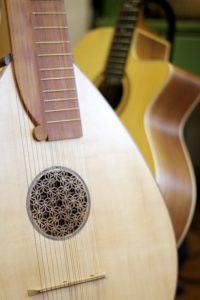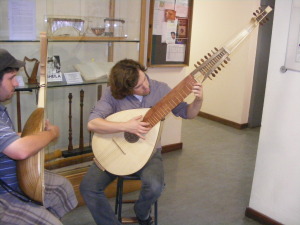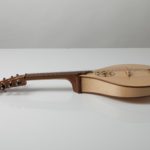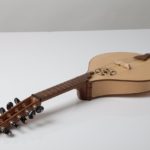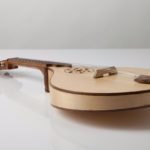The Ceterone and arch-citterns
The ceterone is a 20 string, 13-course arch cittern from northern Italy dating from the turn of the 17th century. Only one definite and complete surviving original example exists, by the prolific Italian maker Gieronimo Canpi to a design (according to the label) by Innocentio Peretti, along with only one printed piece of music calling specifically for a ceterone, towards the end of Monteverdi’s L’Orfeo, published in Mantua in 1609.
Although there are printed references to other large Italian citterns the only surviving tuning systems given for arch-citterns are English (Robinson) and German (Praetorius), neither of which altogether suit the size, string length or fretboard layout of the ceterone.
I spent much of my MA work researching possible tuning systems for the ceterone, before ultimately building the instrument pictured. I came to the conclusion that the most elegant tuning solution that requires the least compromises is to simply treat the ceterone as a wire strung arch-lute, using the ‘A’ tuning of a chitarrone ( A, B, C D E F G A d g b e a,) and assume that it was designed to provide a textural alternative but play the same repertoire.
The instrument pictured is made from maple, with a laminated maple and poplar neck, pear fretboard and walnut trim, the strings are 680mm and 1230mm long and are authentic alloy yellow and red brass and iron.
Many of the enquiries I receive regarding the ceterone come from musicians wanting to play the arch-cittern pieces published by Robinson in 1609.
The arch-cittern tuning system given by Robinson is possible on a ceterone, though it requires either harder than iron wire or dropping some of the courses by an octave. Some of the stretches required to play the music published by Robinson would be extremely challenging on an instrument this size.
I am in the process of designing a smaller, modern-styled ‘musicians’ arch-cittern that should represent a good value option for playing this and similar European repertoires. If such an instrument is something that might be of interest to you I encourage you to send me an email telling me so. You don’t need to commit to buying one, but simply knowing that there is demand will give me incentive to complete the design quicker!
The small English cittern
The small cittern was popular in England during the seventeenth century.I put this design together at university, based on the proportions of a rare surviving 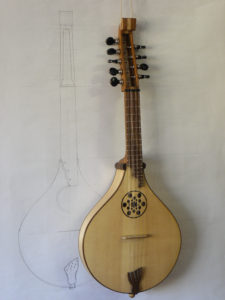 example that has been preserved in unusually good condition in the National Music Museum in Vermillion, South Dakota, and on the description and woodcut given in Michael Praetorius’ Syntagma Musicum (1619).
example that has been preserved in unusually good condition in the National Music Museum in Vermillion, South Dakota, and on the description and woodcut given in Michael Praetorius’ Syntagma Musicum (1619).
The idea was to produce an instrument that would allow a modern musician access to the sound and playing features of the original instrument, but in a user-friendly modern package.
The basic design can be adapted for either authentic brass stringing or for modern guitar strings, can be built with 21st century 12 tone equal temperament frets (scalloped or modern) or with any of a number of authentic seventeenth century temperaments and can be fitted with violin-style pegs, modern friction pegs or mandolin style geared tuning machines.
The design is simple, but retains many original features such as the ‘beanpole’ half neck and tapered body as well as incorporating modern construction techniques.
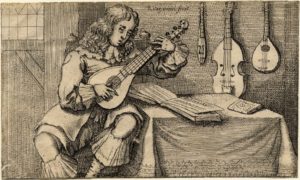
Suitable for tuning in either English tuning + 4th (ECGA), English tuning + Octave (BGDE) or the tuning given in Praetorius .
The instrument pictured is fitted for ball-ended steel strings with modern friction pegs, 12 tone equal temperament and modern bronze alloy frets.
